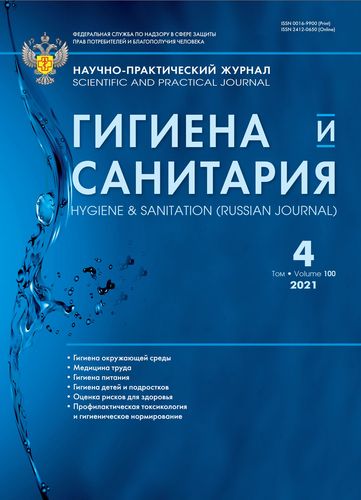Investigation of the psychophysiological response of passengers of fast trains with the different comfort level
- Authors: Bersenev E.Y.1, Dubinin V.I.2,3, Ermakov V.M.4, Kirpicheva A.I.4
-
Affiliations:
- Institute of Biomedical Problems of the Russian Academy of Sciences (SSC RF IBMP RAS)
- Joint Stock Company «Central Research Institute for Machine Building» (JSC «TsNIIMash»)
- National Research University «Moscow Power Engineering Institute» (NRU «MPEI»)
- Scientific and production enterprise «ApATeCh» ltd
- Issue: Vol 100, No 4 (2021)
- Pages: 318-326
- Section: ENVIRONMENTAL HYGIENE
- Published: 13.05.2021
- URL: https://medjrf.com/0016-9900/article/view/639409
- DOI: https://doi.org/10.47470/0016-9900-2021-100-4-318-326
- ID: 639409
Cite item
Full Text
Abstract
Introduction. To create a regulatory framework, including harmonized with European normative documents in terms of assessing passengers’ comfort, the standard of the enterprise STO RZD “Services in railway transport was developed. Rules for assessing the level of comfort of passengers on trains.” The objective of the study is to compare the indices of the comfort level of passengers, determined by the values of the accelerations acting on them, with the psychological sensations and physiological changes in the body arising in this case, depending on the rolling stock and the state of the track.
Material and methods. The experiment using ECG monitoring devices was carried out in four groups of eleven people, six men and five women aged 30-55 years. Additionally, in each group, a psychological survey of 11 more passengers was carried out. All of them were staff members of the Russian Railways divisions.
Results. When traveling on high-speed trains “Lastochka” and “Sapsan,” the respondents more often note drowsiness and an exhausted state’s progression. At the end of the trip, they often emphasize stiffness, discomfort, numbness, and numbness of the leg muscles, probably associated with an extended stay in a forced position in the absence of specific freedom movements. In the “lying” position, a person experiences less fatigue, which, according to the sensations, hardly differs from the conditions of a trip in a “sitting” position during short journeys. Regulatory changes in the cardiovascular system are manifested with the combined influence of uncanceled accelerations (the impact of centrifugal forces) and movement speed changes.
Conclusion. Carrying out a questionnaire survey and physiological measurements of the dynamics of heart rate fluctuations on the investigated sections of the routes in combination with the obtained technical data on the nature of mobile rail vehicles’ movement confirm the absence of critical discomfort for passengers when traveling on passenger and high-speed trains. The calculated values of the average and constant comfort levels are consistent and do not require correction of the corresponding scales’ values.
About the authors
Evgeniy Yu. Bersenev
Institute of Biomedical Problems of the Russian Academy of Sciences (SSC RF IBMP RAS)
Author for correspondence.
Email: bersenev_evgenii@mail.ru
ORCID iD: 0000-0002-6974-5196
MD, Ph.D., Leading Researcher, Deputy Head of Department, State Research Center of the Russian Federation – IBMP RAS, Lab.
О-072 – Laboratory of Autonomic Regulation of the Cardiovascular System of the State Scientific Center of the Russian ederation – IBMP RAS, Moscow, 123007, Russian Federation.
e-mail: bersenev_evgenii@mail.ru
Russian FederationVladimir I. Dubinin
Joint Stock Company «Central Research Institute for Machine Building» (JSC «TsNIIMash»); National Research University «Moscow Power Engineering Institute» (NRU «MPEI»)
Email: noemail@neicon.ru
ORCID iD: 0000-0003-0236-509X
Russian Federation
Vyacheslav M. Ermakov
Scientific and production enterprise «ApATeCh» ltd
Email: noemail@neicon.ru
ORCID iD: 0000-0003-3101-7772
Russian Federation
Anna I. Kirpicheva
Scientific and production enterprise «ApATeCh» ltd
Email: noemail@neicon.ru
ORCID iD: 0000-0002-0707-397X
Russian Federation
References
- Order of the Ministry of Railways № 41 «The norms of permissible rolling stock speeds on 1520 (1524) mm railway tracks of federal railway transport». Moscow: Transport; 2001. (in Russian)
- Nichiporuk I.A. Features of the psychophysiological status of men with different levels of vestibular-autonomic resistance and their interrelation with etiology and pathogenesis of motion sickness. Fiziologiya cheloveka. 2013; 39(5): 496–503. https://doi.org/10.7868/S013116461305010X (in Russian)
- Baevskiy R.M., Berseneva A.P., Bersenev E.Yu., Eshmanova A.K. Use of principles of prenosological diagnosis for assessing the functional state of the body under stress conditions as exemplified by bus drivers. Fiziologiya cheloveka. 2009; 35(1): 34–42. (in Russian)
- Baevskiy R.M., Ivanov G.G., Chireykin L.V., Gavrilushkin A.P., Dovgalevskiy P.Ya., Kukushkin Yu.A., et al. Analysis of heart rate variability using different electrocardiographic systems. Vestnik aritmologii. 2001; (24): 65–87. (in Russian)
- Heart rate variability: standards of measurement, physiological interpretation, and clinical use. Task Force of the European Society of Cardiology the North American Society of Pacing Electrophysiology. Circulation. 1996; 93(5): 1043–65.
- Order of the Ministry of Health of Russia № 869n «On approval of the procedure for conducting clinical examination of certain groups of the adult population». Moscow; 2017. (in Russian)
- Ivanitskiy A.M. Brain Mechanisms of Signal Evaluation [Mozgovye mekhanizmy otsenki signalov]. Moscow: Meditsina; 1976. (in Russian)
- Yates B.J., Miller A.D. Physiological evidence that the vestibular system participates in autonomic and respiratory control. J. Vestib. Res. 1998; 8(1): 17–25.
- Polevaya S.A., Nekrasova M.M., Runova E.V., Bakhchina A.V., Gorbunova N.A., Bryantseva N.V., et al. Discrete monitoring and telemetry of heart beat during intensive work on the computer for the assessment and prophylaxis of fatigue and stress. Meditsinskiy al’manakh. 2013; (2): 151–5. (in Russian)
- Gapanovich V.A., Ermakov V.M. About the quality of rail passenger traffic. Standarty i kachestvo. 2018; (11): 40–3. (in Russian)
- Ermakov V.M., Dubinin V.I., Bersenev E.Yu., Kirpicheva A.I. About standards of comfort level of passengers in trains. Put’ i putevoe khozyaystvo. 2019; (3): 2–6. (in Russian)
Supplementary files









